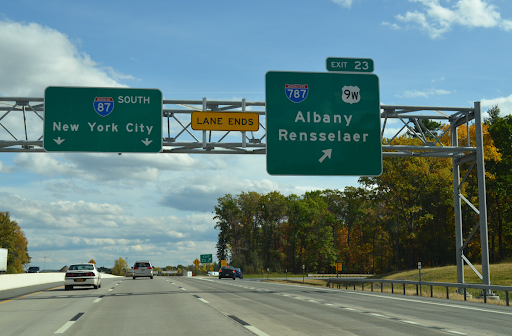EMS & 911 Systems Receive $38 Million in Safe Streets & Roads for All Funds to Reduce Crash Fatalities & Serious Injury
By now you’ve probably heard about the once-in-a-generation funding through the Infrastructure Investment and Jobs Act. What you may not know is that this legislation allows grant funding for EMS (and 911) system improvements that aim to reduce death and disability on our roadways.
More specifically, the Safe Streets and Roads for All (SS4A) Grant Program funds local, regional, and tribal initiatives that focus on the prevention of roadway deaths and serious injuries.
In September, the U.S. Department of Transportation announced more than $1 billion in SS4A grants, including $38 million awarded to benefit EMS and 911 systems working in collaboration with highway safety efforts. These awardees included:
City of Alabaster, Alabama
University of Arizona
City of Batesville, Arkansas
County of Gunnison, Colorado
Southwest Minnesota EMS Corp
Charleston County 911, South Carolina
City of Houston, Texas
To date, the SS4A program has funded projects in more than 1,600 communities, supporting roadway safety for nearly 75% of the U.S. population.
There are two types of SS4A grants. The first type are Planning and Demonstration grants, which pay for the creation of a comprehensive safety action plan; work to complete or enhance an action plan; or work to carry out demonstration activities that inform your development of an action plan or update an existing plan.
The second type, Implementation grants, provides money to implement the projects and strategies an agency has identified in an eligible action plan.
NHTSA’s OEMS and National 911 Program encourage 911 and EMS fire-rescue agencies to continue seeking funding opportunities through DOT grants.
SS4A in Action
Assistant Chief Robbie MacCue of the Town of Colonie EMS in New York works at an agency that’s been awarded an SS4A Planning and Demonstration grant. In late 2023, Chief MacCue and his colleagues at two neighboring EMS agencies learned they’d receive $2.4 million for a collaborative project called “The Responder & Patient Safety Improvement Project.”
Their pilot demonstration will focus on the prevention of avoidable crashes along the more than 30 miles of high-speed roadways in the area, which includes sections of I-87 Northway, I-90, State Route 7 and I-787. “We’re testing the use of transponder technology that can alert cars approaching an emergency scene to slow down and give drivers more advanced notice in order to prevent secondary incidents,” explains Chief MacCue. “This also applies to emergency vehicles traveling to an emergency scene. This technology can give them 20 to 30 seconds’ notice, as opposed to three to five seconds to react.” The project includes the creation of a prehospital health information exchange that will give providers better information at the point of care using existing IT systems. “This will help improve post-crash care,” he says.
Chief MacCue wants to demystify the application process and encourage more EMS agencies to apply for funding. He offers these three pieces of advice:
Keep it high-level. This, he says, was the best advice he got about writing his joint SS4A application. “Also, don’t jump to specific solutions,” he adds. “The action plan process will help document and reveal priority areas in your community that can be studied in the first phase of this funding and scaled in the second phase.”
Look for others to collaborate with. “Many EMS departments likely work with their surrounding EMS agency partners for mutual aid, so continuing to reach out to build those relationships and bring additional resources is a win-win for everyone,” MacCue says. Similarly, if there’s an aspect of safety you want to improve in your community, reach out to those already innovating in that space. “We are fortunate to have such a good working relationship with our Colonie Police Department and their traffic safety division and look forward to leveraging their experiences to improve safety for all of those who use our roads.”
Don’t get overwhelmed. MacCue found the SS4A application less daunting and time-consuming than others he’s seen. It helps that the narrative portion is limited to two pages. He estimates he spent about 20 to 30 hours total in completing the application. “It’s not necessary to have all of the answers. If it were, they would not be asking for our ideas,” he says. “It is, however, necessary to have a learner’s mindset and approach the problem with curiosity. I would also recommend referencing and aligning your grant with the National Roadway Safety Strategy’s Safe System Approach.”
MacCue’s ultimate hope is simple but still ambitious: to execute a successful action plan that addresses the challenges EMS providers in his area face and outlines the resources needed to improve post-crash care, thereby reducing mortality. The chief envisions a safer future beyond his own community: “We look forward to also piloting a demonstration project that could be scaled to a much larger geographic phase in the second phase of funding.”
To learn more about the SS4A grant program, including how to apply, deadlines, eligibility and requirements, awarded projects in your area, and webinars and other resources, visit the SS4A site. You can also watch the January 2024 Office of EMS webinar, “Leveraging DOT Grant Funds for EMS Crash Response Improvement,” and find advice on completing your application and how Bruce Evans, Fire Chief of Colorado’s Upper Pine River Fire Protection District completed their agency’s successful SS4A application.



